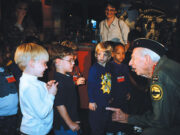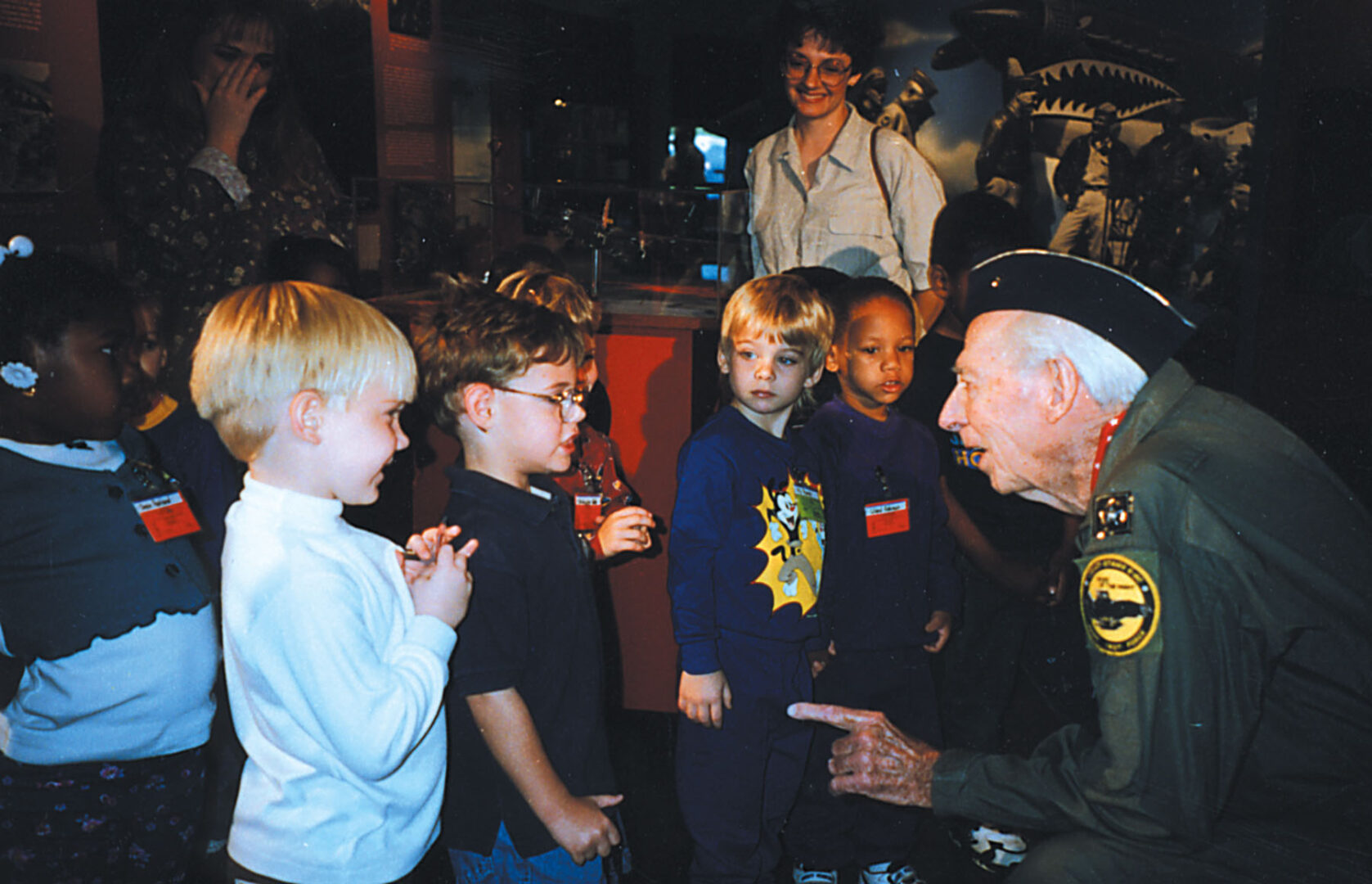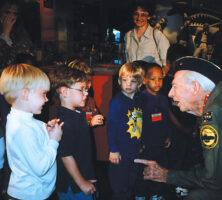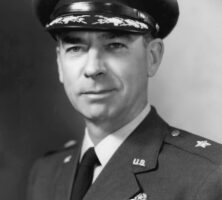Robert Scott was one of Georgia’s most prominent World War II heroes, as well as a best-selling author. A fighter pilot in World War II (1941-45) until 1943, Scott returned to Georgia to become an integral part of the state’s war effort, and he was later instrumental in the founding of the Museum of Aviation at Robins Air Force Base.
Robert Lee Scott Jr. was born in Waynesboro on April 12, 1908, to Ola Burkhalter and Robert Lee Scott Sr. The oldest of three children, he grew up and was educated in Macon. He gained his love for flying as a very young child and dreamed of being a fighter pilot throughout his youth.
Scott entered the U.S. Military Academy in 1928. After graduation he toured Europe and Asia on a motorcycle before returning as a second lieutenant to Randolph Field, Texas, in the fall of 1932 to begin flight training. In 1934 he married Catharine Rix Green of Fort Valley, and they moved to Mitchell Field, New York, for his first assignment. That same year U.S. president Franklin D. Roosevelt assigned the U.S. Army Air Corps to fly airmail. In spite of a shortage of pilots, crews, and good planes, they kept the mails on schedule and proved the merit of the air corps. Flying “Hell Stretch” from Newark, New Jersey, to Cleveland, Ohio, Scott became an experienced pilot. After the air corps experiment ended, he moved to Panama for three years and then entered Cal-Aero Academy Flying School in Ontario, California.
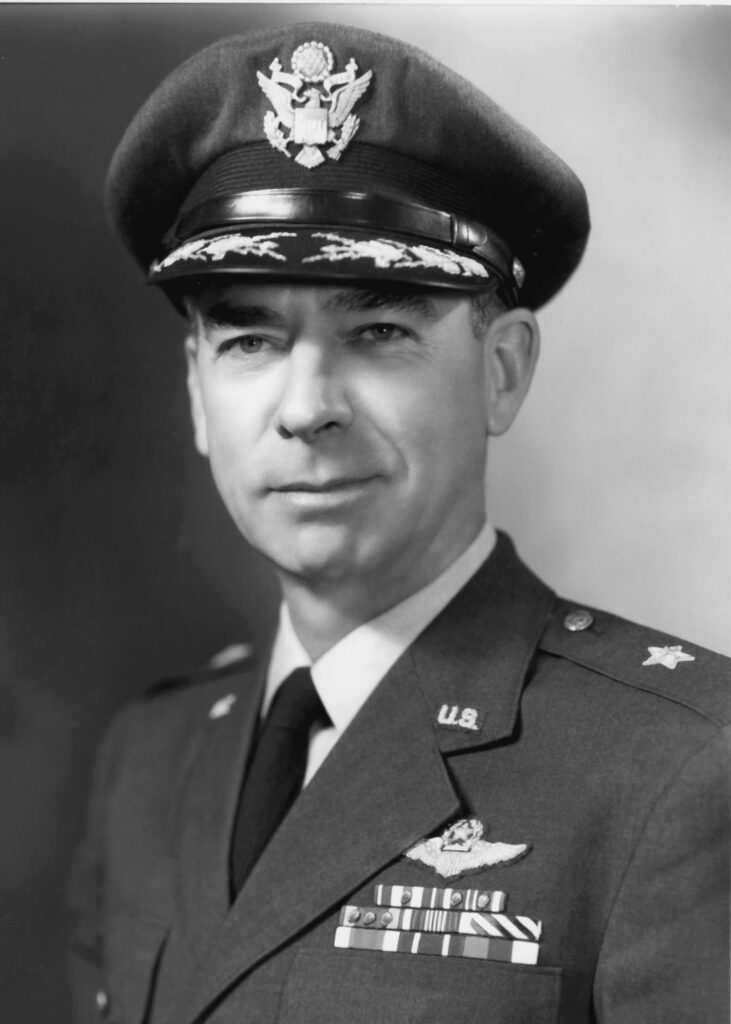
Image from U.S. Air Force
Scott was at Cal-Aero when the Japanese bombed Pearl Harbor in Hawaii, an event that precipitated U.S. entry into World War II. By then a major, he wanted to fly combat missions, but at the age of thirty-four he was at first deemed too old. Eventually, however, he was assigned to a top-secret B-17 raid on Tokyo, Japan, designated Task Force Aquila. When that mission was canceled, he found himself in Karachi, India (later, Karachi, Pakistan). Soon thereafter he was appointed deputy of operations for the Assam-Burma-China Ferry Command, which flew supplies over the Himalaya Mountains to, among others, General Claire Lee Chennault and his American Volunteer Group (AVG) or “Flying Tigers.” Scott and Chennault became friends, and in July 1942, when the AVG became the Fourteenth Air Force of the U.S. Army Air Forces, Chennault made Scott the commander of the renowned Twenty-third Fighter Group.
By February 1943 Scott, having shot down at least thirteen Japanese aircraft, was sent home to make speeches and sell war bonds. He wrote about his experiences in God Is My Co-Pilot. Published in 1943, it is still regarded as a classic wartime memoir. Warner Brothers bought the rights to the book and made a movie of the same name starring Dennis Morgan as Scott. It premiered in Macon on February 21, 1945.
After the war Scott was assigned to command the first jet-flying school at Williams Field, Arizona. In 1950 he assumed command of the Thirty-sixth Fighter Bomber Wing in Germany and in 1953 entered the National War College in Washington, D.C. After graduation he was promoted to brigadier general and was made director of information for the air force. His often outspoken style did not endear him to the Washington bureaucracy, however, and he was soon back flying fighters at Luke Air Force Base in Arizona. It was from there that he retired on October 31, 1957.
Scott, by now a grandfather of four, spent much of his early retirement in Arizona. After the death of his wife in 1972 he continued to write, producing dozens of books and articles, and to give lectures on his experiences. In 1980, at the age of seventy-two, he spent ninety-three days walking and riding a camel along the entire 2,000-mile length of the Great Wall of China.
In 1986 Scott returned to middle Georgia and became involved in building the Museum of Aviation, which has since become the second largest air force museum in America and home of the Georgia Aviation Hall of Fame , at Robins Air Force Base in Warner Robins. Scott was inducted into the hall of fame, and in 1998 the museum opened a major display chronicling the general’s life and career.
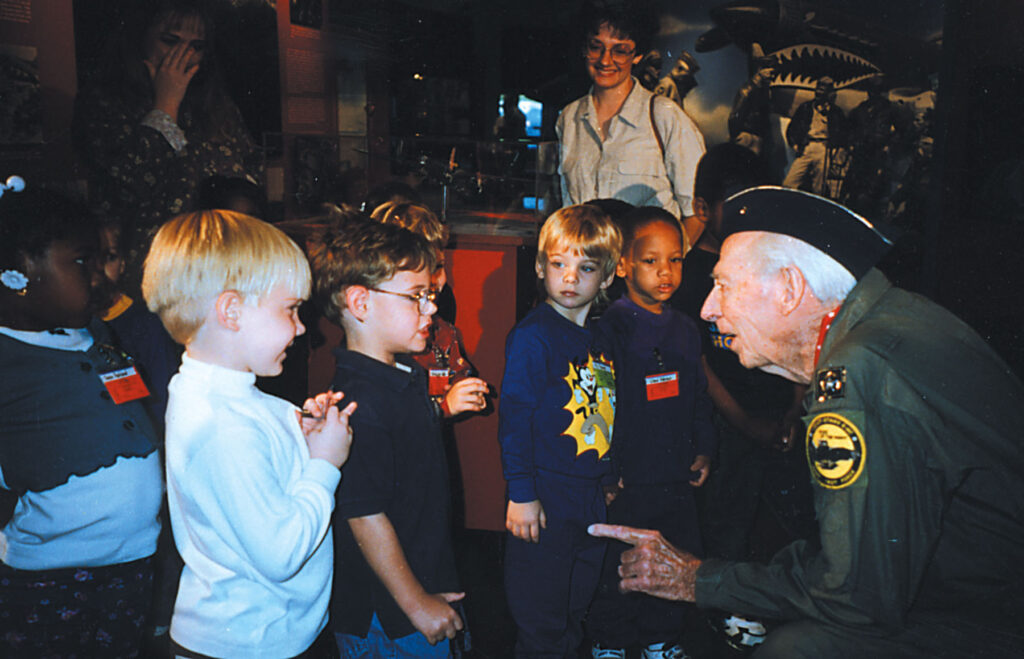
Courtesy of the Museum of Aviation
Scott continued to be active well into his later years. In 1984 he flew an F-16 Falcon jet fighter, and in 1995 an F-15 Eagle. On his eighty-ninth birthday, in 1997, he flew in a B-1B Lancer supersonic bomber. During the 1996 Olympics in Atlanta, Scott carried the Olympic torch along a section of Georgia Highway 247 named in his honor. In 2003 he was presented with a Governor’s Award in the Humanities by Georgia Humanities.
Scott died in Warner Robins in 2006, at the age of ninety-seven.


